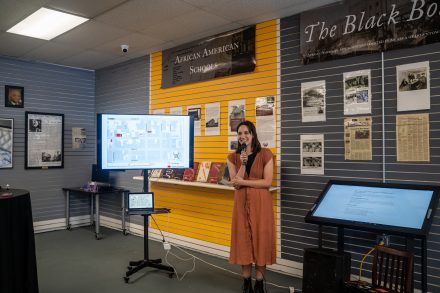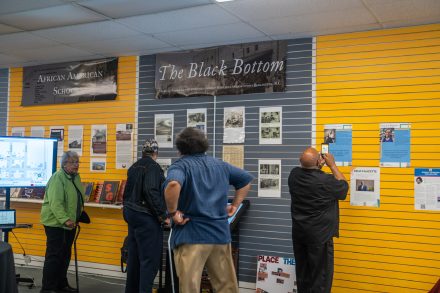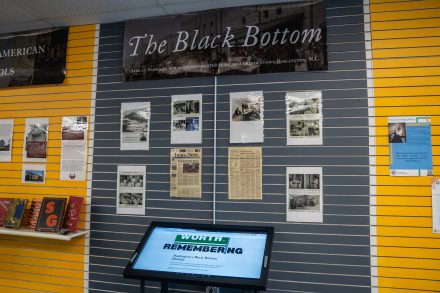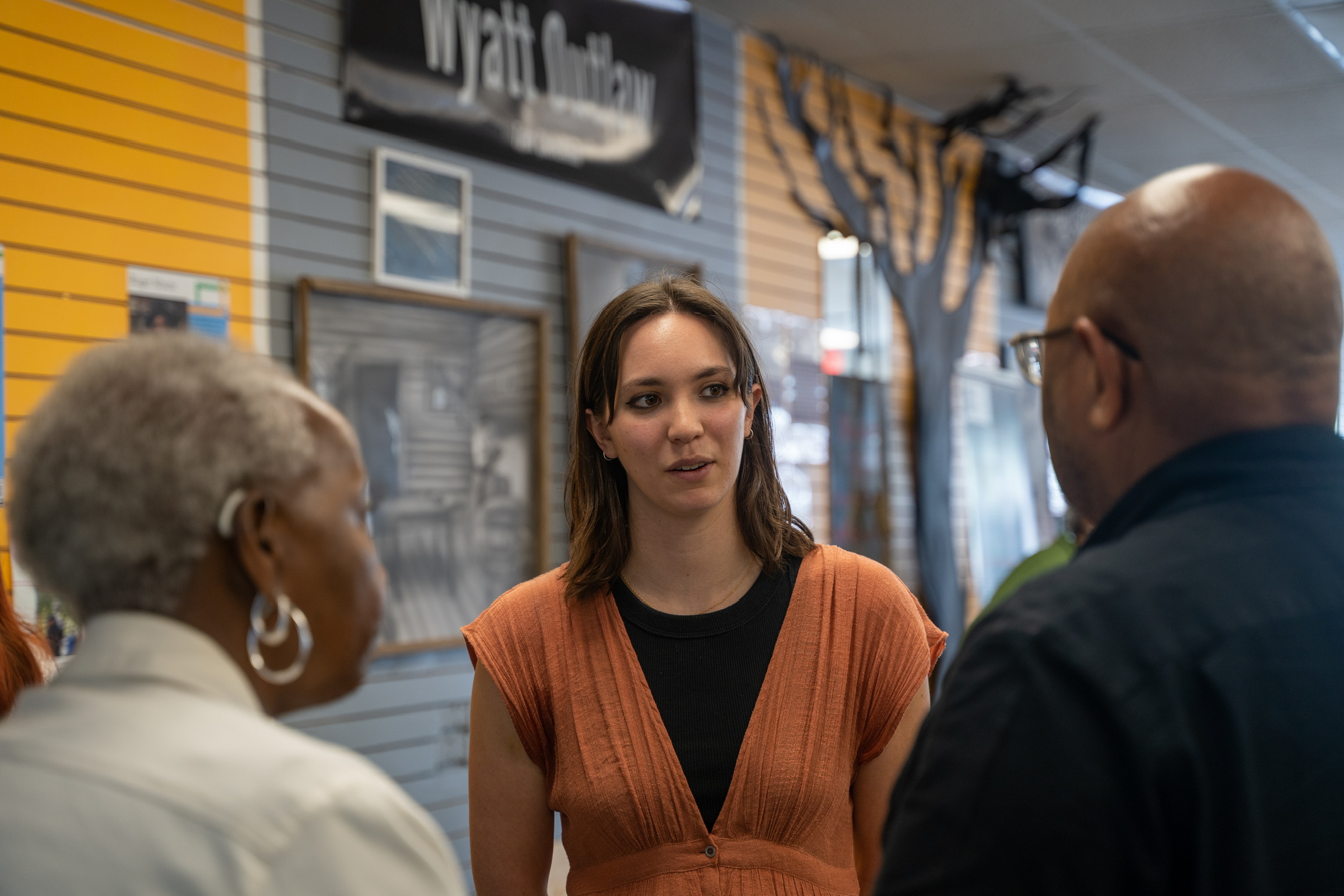Garcia’s study of Burlington’s bygone Black business district stemmed from the Power & Place Collaborative’s efforts to document the stories and history of Alamance County’s Black community.
On walking tours of downtown and east Burlington, Lucy Garcia ’23 kept listening to the history and wondering: Where are the signs? Where are the markers?
She’d connected with residents through the Power and Place Collaborative — an effort by Elon and community organizations to document and preserve Alamance County’s Black history — and kept hearing stories of significant events or businesses with roots in the city’s former Black-owned business district. It was called “Black Bottom” and remained on Worth Street, one block north of Main Street, from Reconstruction through the era of Jim Crow and segregation. By the 1970s, the businesses were shuttered or displaced.

For years, organizers of Burlington’s African-American Cultural Arts and History Center have wanted to better tell Black Bottom’s story and piece together various causes of its decline. Shineece Sellars, the center’s executive director, led one of Garcia’s tours where she pointed out Slade Barber Shop as one of the few remaining Black Bottom businesses in operation. On the same tour, she showed Elon students where Burlington’s race riots of 1969 began.
“I realized people could be thinking about this more and asking questions about it if there was a sign to tell them about the significance of what used to be there,” Garcia said. “I wanted to gather more evidence that there should be some kind of public memory of the area.”
Sellars and others at the center had begun compiling information about Black Bottom alongside other local history projects. Garcia — an Honors Fellow, environmental studies major with minors in policy studies and geographic information systems — saw she could contribute to the project.
For her honors thesis, she dug through archives at Alamance County Public Libraries, the City of Burlington’s records, news clippings, and used Sanborn maps originally created for fire insurance companies to trace the district’s rise and fall. She cataloged the businesses and their owners and compiled the information into interactive maps. On April 29, Garcia presented her findings and submitted her documents to the center for its use and further study.

By the 1950s, Garcia found few public references to the district beyond it being described as blighted or dangerous, often in racially-coded terminology. By the 1960s, businesses began relocating to Rauhut Street, a section of highway N.C. 62 in East Burlington that later came to also be called Black Bottom. In the 1970s when Maple Avenue was extended through Worth Street and downtown planners were razing areas of Worth Street for redevelopment or parking lots, the district was gone.
“For a lot of people, Black Bottom is like an urban legend. Lucy’s work made it real,” said James Shields, manager of the African-American Cultural Arts and History Center. “When we deal with history a lot of times, we deal with more questions than answers. In the case of Lucy’s work, it’s a rabbit hole we want to dive into to find out more. We know what the narrative is, but we feel like we don’t have the whole story. She’s given us a lot to build on.”
Associate Professor of Geography Sandy Marshall, who led the Honors seminars with Director of Design Thinking Danielle Lake that grew into the Power and Place Collaborative, said Garcia’s project “models the kind of community-based research I want to see at Elon.”
“I’m tremendously grateful for Lucy’s work in helping to fill silence on this issue and to map the creation and displacement of Black Bottom. It provides significant information and data that future researchers can use to build this story,” Marshall said. “Lucy did this every step of the way with community involvement.”

Associate Professor of Geography and Environmental Studies Ryan Kirk, Garcia’s mentor on the project, commended her thoughtfulness and initiative in serving the community.
“Lucy was committed from the start to develop an urban-planning project that brought value to our community. The Black Bottom area may now be covered with parking lots, but her research literally helps put this important community resource back on the map of Burlington’s cultural history,” Kirk said.
Garcia leaves the project at a finished first phase but — like Shields and others — still wondering why few clear answers emerged.
“There were hypotheses about what happened, but no one knew why. After all of this, I still don’t know,” Garcia said. “Future research could examine if Rauhut Street grew as Black Bottom withered, or develop maps and visuals of all of the businesses and owners, or really dig into city archives and find out where the money was coming from and who was advocating for things. I feel like a whole other project could be done on the language of parking.”
Still, she was satisfied that people left the April 29 presentation discussing and remembering Black Bottom.
“The day before, no one had been talking about Black Bottom, but probably everyone left that room and told one person about it and the history, and that’s important work to me,” she said. “I hope this will build momentum towards some kind of healing.”



